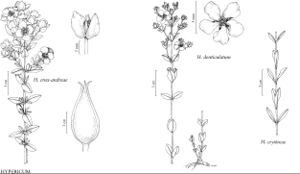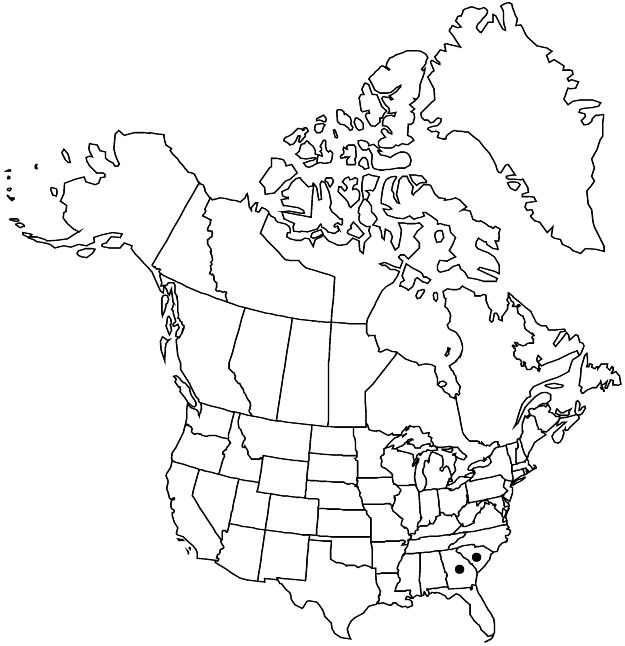Hypericum erythreae
Nomencl. Bot. ed. 2, 1: 787. 1840.
Herbs perennial, erect to ascending, branching at ± aerenchymatous base and in inflorescence, 3–12 dm. Stems: internodes 4-lined. Leaves ascending to appressed, sessile; blade usually lanceolate, rarely elliptic to ovate, 5–20(–24) × 5–15 mm, shorter than internodes, smaller distally, leathery, margins plane, apex acute, gland-dotted, less conspicuously adaxially, basal veins 1–5, midrib with 2–3 pairs of branches. Inflorescences corymbiform, to 30-flowered, branching mostly dichasial. Flowers: 5–13 mm diam.; sepals lanceolate, unequal, 3.5–4.2(–4.8) mm, margins sometimes ciliate, not setulose-ciliate, apex acute to subacuminate; petals orange-yellow, ± obovate, 5–10 mm; stamens 50–80, filaments basally connate; styles 2–4 mm; stigmas clavate. Capsules ovoid, 3–4.5 mm. Seeds 0.4–0.7 mm; testa reticulate.
Phenology: Flowering mid summer–fall (Jul–Oct).
Habitat: Bogs, ditches, coastal plain
Elevation: 0–300 m
Discussion
Selected References
None.

